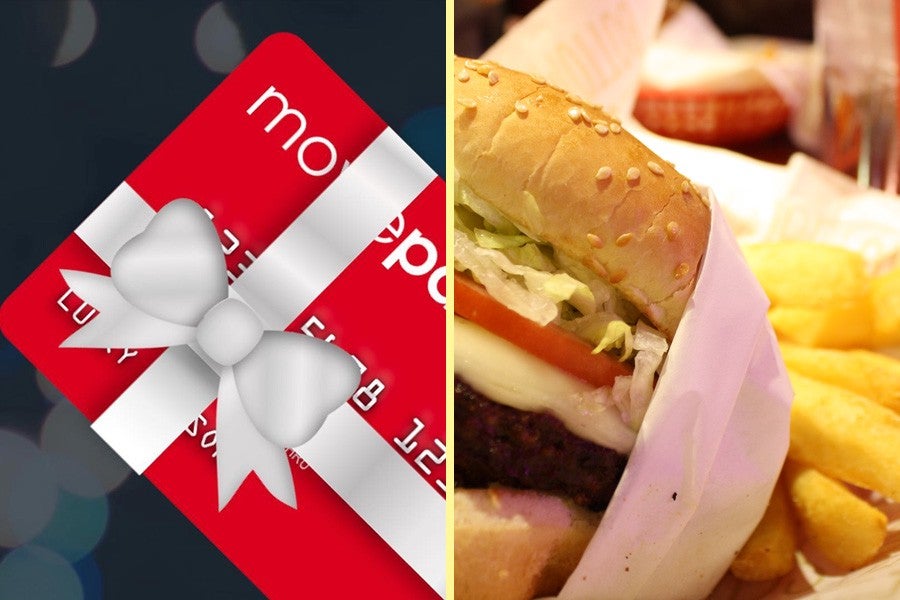Usually when a company announces a seemingly amazing deal on their service, you sign up for the discounted service, only to never use it and realize months or even years that the company raised the price shortly after you signed up and has been quietly charging your credit card for that amount every month since. Or you do try to use the service, only to realize it’s subject to a slew of blackout dates and use requirements that render all the savings more or less meaningless.
But every once in a while there comes a subscription service that’s such a good deal that you wonder who at the company ever approved such a thing, since there’s no way they can be turning a profit off the promotion. Two of the most recent examples: MoviePass and Red Robin’s Year of Yummm promotion.
MoviePass
Last month, MoviePass announced it was offering a one-year subscription to its unlimited movie theater service for a limited time at $89.95, or just $7.50 per month. That is, a movie a day, every day, for less money per month than the cost of one movie ticket.
It’s easy to see that this promotion is an absolute steal, even for a casual movie-goer. The average movie ticket price is $8.93, according to the National Association of Theater Owners, so MoviePass customers need to use the service once a month to be getting a good deal. And the deal is even sweeter for people who live in major cities where ticket prices are steeper. Even at its regular price of $9.95 per month, MoviePass is enticing.
If you’re wondering how theaters can participate in MoviePass without going under, consider all the empty seats the last time you went a movie. The theater already isn’t making money on those empty seats, so allowing someone to come in and essentially view a movie for free makes no tangible difference. But there is a good chance that person will buy some Milk Duds, popcorn and a 72-ounce Dr Pepper at the concession, and that’s all added revenue.
There are some minor stipulations to take into account with MoviePass, however. MoviePass doesn’t allow its customer to plan ahead to see a movie. In other words, tickets must be bought onsite at the theater, so you can’t buy a ticket hours ahead of showtime and secure choice seating, or get your Star Wars: The Last Jedi tickets weeks in advance. Nor can you use it to effectively plan a movie date — MoviePass holders can only buy one ticket at time through the service. And while it’s available at 91 percent of theaters, it can’t be used at fancy cinephile theater chains such as Arclight and Landmark.
So economically speaking at least, MoviePass more or less breaks down as follows:
- If you’re the type who loves to kill an idle afternoon with an unexpected trip to the movies, or the movie who buff who makes a point to see every important film that comes out, but doesn’t mind seeing them at some unpretentious multiplex, MoviePass is an undeniably great deal.
- But if you’re a father who takes the kids to the theater once a year to see the latest Pixar film, or a cinephile who wants a more refined theater experience, MoviePass has little to offer you.
Year of Yummm
Subscription services are all the rage in the chain-eatery world, with Olive Garden offering customers a pass that allows for unlimited pasta consumption for eight weeks (gross) and Smashburger selling a $54 pass that allows customers to buy a burger a day for $1 for the 54 days leading up to the new year (significantly less gross, but still gross, nonetheless).
Not to be outdone, burger joint chain Red Robin announced its own prepaid meal plan late last month. Customers pay $100 up front for a yearlong subscription and receive a $15 digital gift card emailed to them at the beginning of each month. The gift cards amount to $180 in value, so you’re essentially spending $100 to get an additional $80 in Red Robin. (Yes, the deal is unnecessarily complicated.)
But the deal supposes each customer will spend exactly $15 on Red Robin per month, which seems unlikely. Red Robin is probably banking on luring customers in with the gift card, only to have them spend more than $15 each trip, and recoup its losses on beverage sales. Or Red Robin expects card holders to spend only $12 each month, for instance, and not spend their remaining $3 in value.
Don’t get me wrong: Red Robin is good as hell. But this deal requires a large amount of planning to effectively take advantage of. So unless you want to manage your RR consumption with the same kind of intensity as you do your 401k, it’s probably a pass.
